IndiaWilds Newsletter Vol. 12 Issue I
ISSN 2394 – 6946
Natural Sounds: Restorative benefits on Ecosystems & Us
The human population on earth is exploding and has already crossed 7 billion. By 2050 the human population is expected to cross 9 billion. The destructive hand of man is visible everywhere. Plastics have inundated the oceans. Sewage and industrial wastes have been polluting the ocean waters. Climate change has become a reality and has changed the weather patterns. Extreme weather events have become frequent and higher in intensity. Oceans are warming up and becoming more acidic. These changes are resulting in corals moving away from the equator to more cooler areas (Global biogeography of coral recruitment: tropical decline and subtropical increase; Price et al.; https://www.indiawilds.com/diary/indiawilds-newsletter-vol-11-issue-vii/ ). The existing corals are bleaching and dying. Fishes move away from dead coral reefs and those reefs become dead zones.
Our ecosystems are complex web or relationships between various species. Even in land based forest ecosystems the detailed relationships between species and their impact is not well understood. Compared to land our oceans are still relatively less explored and much less understood frontiers. So the behaviour of various species and their impact on each other is an important area that needs extensive study.
Anthropophony or human generated sounds such as loud sounds of boats, ships, underwater activities like oil rigs, mining, dredging and other human activities are causing great stress on the marine species, especially on the species that use ecolocation. It is well known that various species suffer great stress due to sound. Rapid palpitations, miscarriage etc are common when species are exposed to high sounds and often move away from good habitat to avoid sound. However, our ability to record and reproduce sounds can be of some help.
Till date we had not placed much emphasis on natural sounds and vocalisations of species. According to Indian law, environmental impact assessments (EIA) are done to understand the impact of various projects in ecologically sensitive areas. However, the consultants conducting the EIA never place emphasis on the sounds. Emphasis is placed on direct sightings. No consideration is given about the use of habitat by species in various seasons. A habitat looking like barren grassland or wetland can harbour thousands of migratory birds in winter. Similarly elephants and other animals make use of land as migratory corridors. Round the clock recording of sounds in habitats can give an accurate idea about the use of habitat.
Recording of sounds from habitat rich in species can be creatively used to lure species to degraded habitats. Scientists have found that by playing sounds of healthy coral reef ecosystems over loudspeakers in dying coral reefs they were able to attract more fishes. (Gordon, T.A.C., Radford, A.N., Davidson, I.K. et al. Acoustic enrichment can enhance fish community development on degraded coral reef habitat. Nat Commun 10, 5414 (2019) doi:10.1038/s41467-019-13186-2). This study was conducted over 40 days in Australia’s northern Great Barrier Reef and it proved that playing sounds of healthy coral reefs attracted not only juvenile fishes but also retained them. After 40 days the comprehensive survey revealed that there were significantly more herbivores, omnivores, planktivores, invertivores and piscivores on acoustically enriched reefs than on acoustically unmanipulated reefs. The overall abundance doubled and the species richness increased by more than 50%.
This showed that despite visual cues of dying coral reefs the fishes give priority to sounds of rich coral reefs played via underwater loudspeakers and remain in the dying coral reefs. Over a period of time other species too get attracted and this create a vibrant ecosystem. This method can be successfully used while restoring degraded coral habitats. For example, construction of ports result in lot of dredging and the sediments inundate the corals resulting in their death. So habitat alteration to remove the sediments or while undertaking other management interventions and simultaneously playing sounds of underwater loudspeakers can result in fishes coming back and removing toxic algae and seaweeds and nourishing the coral reef back to health.
The experiment of playing sounds of healthy coral reef ecosystems can be replicated in our land based ecosystems as well. Too often, various species of wildlife avoid degraded habitats, buffer zones of forests etc. Herbivores concentrate on areas where they get enough food. These days many of our wilderness areas have been overrun with exotic weeds like Lantana camara. The exotic weeds outcompete native vegetation. So the herbivores find it difficult to have rich food supply. So their numbers deplete. When the forest department takes action to remove exotic weeds, it can use acoustic enrichment techniques to attract species. Playing sounds of birds singing intermixed with joyful sounds of herbivores may help attract other species to the landscape. Natural dispersion of seeds is dependent on many wildlife and bird species. When large species like elephants and other herbivores avoid a part of forest then it impacts the regeneration of many species of trees. Undigested seeds often germinate in the dung. The dungs of various herbivores also help enrich the landscape. Various birds as well as beetles, bugs and other microorganism too make use of the dung of elephants. So by acoustic enrichment when other species come from nearby jungles to degraded landscape where efforts are being taken to remove exotics and improve the biodiversity, natural processes of germination of various plants are likely to occur. Lesser carnivores as well as bigger predators will follow the herbivores. Acoustic enrichment along with other management interventions along contiguous patches in a phased manner can slowly ensure that species gradually move and reclaim the landscapes.
Studies have shown that natural environments help us in recovering from stress (Stress recovery during exposure to natural and urban environments; Ulrich et al., Journal of Environmental Psychology, Vol. 11, Issue 3, Sep 1991). Natural environments turn out to be particularly rich in the characteristics necessary for restorative experiences. Experience in natural environments can not only help mitigate stress; it can also prevent it through aiding in the recovery of this essential resource. (The restorative benefits of nature: toward an integrative framework; Kaplan 1995, Journal of Environmental Psychology). So our protected area managers and ecotourism operators also need to understand the impact of natural sounds on our well being and design ecotourism offerings accordingly.
At the moment, ecotourism operators set up tents and build resorts without understanding the impact of retaining the natural environment. So they try to modify the places to create a playground like environment even in ecosensitive areas. In a recent visit to some of the places in Odisha, I found tents setup in pristine locations. However, loud music is played and dance and plays are staged in the name of promoting the local artists and culture. Why do you need to destroy the natural soundscape of a river mouth or seashore? Let the local cultural promotions happen at a different place. The primary purpose of people moving to a natural landscape to recover from stress is not solved if they are deprived of natural sounds. Hopefully the tourism department will not setup dance and music performances similar to Ramachandi beach festival in Rajhans island and destroy the peace of dolphins and aquatic fauna.
A study has shown that the risk of Type 2 Diabetes Mellitus was significantly lower in greener neighborhoods, controlling for demographic and cultural factors, especially among participants residing in neighborhoods with 41-60% green space land use. (Is Neighborhood Green Space Associated with a Lower Risk of Type 2 Diabetes Mellitus? Evidence from 267,072 Australians, Astell-Burt, T., X. Feng, and G.S. Kolt. 2013.) Currently many state governments mandate green areas for residential buildings but those are not followed. In many cases green areas are equated with playgrounds or lawns which take up more water. The Government should mandate that each building has to have tall trees and fenced green areas so that they work as micro wilderness areas for the mongoose and other smaller species and also help in carbon sequestration as well as help in lowering our stress and associated health risks.
We have messed up with the world and are now heavily facing pollution, stress, suicide etc. Hope people as well as authorities understand the impact of nature on us and take steps to not only preserve our natural landscapes but also reengineer our lives to be more in sync with nature.
Conservation News:
Supreme Court gives nod to African Cheetah introduction in India:
NTCA had filed an application seeking permission to introduce african cheetah in India. Supreme court has now allowed the central govt. to introduce African cheetahs in suitable habitat.
The case was heard by a SC bench comprising CJI S A Bobde, Justice B R Gavai and Justice Surya Kant and a three member committee has been formed to guide the NTCA. The members of the three member committee are Ranjit Singh, DG Wildlife Dhananjay Mohan, DIG Wildlife. The bench said that the decision for relocation will be taken after a proper survey and the action to introduce African cheetahs from Namibia will be left to the discretion of NTCA. This three member committee will submit a report within four months.
Earlier the Hon’ble Supreme Court had put a bar on introduction of African Cheetah in India. However, NTCA decided to again seek permission of the court and this time they have been successful.
The SC bench said “In an application in 2013 by The Centre for Environment law, this court struck down the order of MOEF in MP on the ground that the MOEF had not conducted any detailed study before introducing foreign species cheetah. This application seeks to remedy the effect in that application. The African cheetah would be introduced on the experimental basis in a carefully chosen habitat to see whether it can be put in some other place. In case there is difficulty in choosing the location the location may be changed. It is not desirable that this action of introducing the African cheetah be left to the sole discretion of NTCA but the NTCA be guided by a committee of experts in the field who would carry out a survey for the best location for cheetah and a careful decision of the viability of the cheetah”
Unfortunately, African Cheetah is an exotic species and its reintroduction has no conservation value. It would have tourism value and that is what is NTCA aiming for. African Cheetah was never a part of this landscape, so they should not be introduced in India.
The proponents of this project say that it will help in habitat protection. Unfortunately that is farther from the truth. How many square kms of habitat are we talking? We simply don’t have grasslands bigger than 30-40 Sq. kms. And if we are thinking of having a project in such a small area than it is like a small safari in a zoo. Already grasslands and forests are being taken over on some project or the other.
It is said that introduction of African cheetah would lead to better protection of the existing species. There are existing projects like Project Tiger, Project Elephant etc. We do have sanctuaries after particular species. However, we don’t pay attention to the existing protected areas. So introduction of African Cheetah can’t break this apathy.
A charismatic species like the Tiger is on the brink. So definitely Cheetah can’t succeed where tiger has failed in overcoming the structural issues. For eg. Where is the protection?
Who is protecting? Our frontline guard force, foresters, rangers etc are old. Half of the posts are lying vacant. A number of places also require more manpower than the sanctioned capacity. They don’t get their salaries in time. They are demotivated, ill equipped. Who is looking into this basic issue?
In our federal setup, the forests are under the control of the states. It is laughable when one state doesn’t allow translocation of a species to a forest in another state. We haven’t been able to save the Asiatic lion. Gujarat is not willing to give a few lions from Gir to be translocated to Madhya Pradesh despite Supreme Court order. Even though that is vital for the survival of lions in this country.
Our forest department is still oriented with the colonial hangover of calculating our forest wealth in terms of cubic feet of timber. Too often we resort to cheap gimmicks rather than ecologically sound plans. The few scientists of repute in this country are mostly depending upon their studies for support rather than illumination – the way a drunken person uses the lamp posts.
I would like to quote the late Kailash Sankhala here: “ We seem to forget the fact that nature cannot be protected by chanting Vedic mantras or celebrating ‘Vana Mahotsava’ and National Wildlife Weeks, nor by building mathematical models and writing glossy management plans, nor by making formal declarations of intent in quick succession….”
Gimmicks like African Cheetah introduction doesn’t help in our conservation and should not be a part of our vision. We have better things to do like energising our frontline protection force, creating ecologically sound management plans and implementing those, prosecution of poachers, restoration of wildlife corridors, relocation of villages from the forest and resettling the villagers, creating a dedicated wildlife department etc, than get swayed by such gimmicks.
India achieves complete phase out of Ozone depleting chemical HCFC-141b
India has successfully achieved the complete phase out of Hydrochlorofluorocarbon (HCFC)-141 b, which is a chemical used by foam manufacturing enterprises and one of the most potent ozone depleting chemical after Chlorofluorocarbons (CFCs). (HCFC)-141 b is used mainly as a blowing agent in the production of rigid polyurethane (PU) foams.
India has consciously chosen a path for environment friendly and energy efficient technologies while phasing out Ozone Depleting Substances (ODSs). Importantly, India is one among the few countries globally and a pioneer in some cases in the use of technologies, which are non-Ozone Depleting and have a low Global Warming Potential (GWP).
India had proactively and successfully taken the challenge of complete phase out of Hydrochlorofluorocarbon (HCFC)-141b, which is a chemical used by foam manufacturing enterprises by 1.1.2020. On 31 December, 2019, as part of the Government’s commitment for moving towards environment friendly technologies, in a significant first, the Ministry of Environment, Forest and Climate Change (MoEFCC) brought out a notification in the Gazette of India through which the issuance of import license for HCFC-141b is prohibited from 1st January, 2020 under Ozone Depleting Substances (Regulation and Control) Amendment Rules, 2019 issued under the Environment (Protection) Act, 1986.
HCFC-141b is not produced in the country and all the domestic requirements are met through imports. With this notification, prohibiting the import of HCFC-141b, the country has completely phased out the important ozone depleting chemical. Simultaneously, the use of HCFC-141 b by foam manufacturing industry has also been closed as on 1st January, 2020 under the Ozone Depleting Substances (Regulation and Control) Amendment Rules, 2014.
Nearly, 50 % of the consumption of ozone depleting chemicals in the country was attributable to HCFC-141b in the foam sector. The Ministry adopted a structured approach to engage with foam manufacturing enterprises for providing technical and financial assistance in order to transition to non-ODS and low GWP technologies under HCFC Phase out Management Plan (HPMP). Around 175 foam manufacturing enterprises have been covered under HPMP out of which, 163 enterprises are covered under stage II of HPMP. The complete phase out of HCFC 141 b from the country in foam sector is among the first at this scale in Article 5 parties (developing countries) under the Montreal Protocol. The implementation of HPMP through regulatory and policy actions, implementation of technology conversion projects has removed around 7800 Metric Tonnes of HCFC 141-b from the baseline level of 2009 and 2010 of the country.
The phase out of HCFC-141b from the country has twin environmental benefits viz. (i) assisting the healing of the stratospheric ozone layer, and (ii) towards the climate change mitigation due to transitioning of foam manufacturing enterprises at this scale under HPMP to low global warming potential alternative technologies.
The polyurethane foam sector has links with important economic sectors related to buildings, cold storages and cold chain infrastructure, automobiles, commercial refrigeration, domestic appliances such as refrigerators, water geysers, thermo ware, office and domestic furniture applications, specific high value niche applications etc. In India, the foam manufacturing sector is mix of large, medium and small enterprises having varying capacities, with preponderance of MSMEs. Many of the MSMEs operate largely in the informal sector.
To ensure minimal dislocation in the sector and for enhancing the capacities of Micro, Small, and Medium Enterprises (MSMEs) in converting to low-GWP non-ODS technologies, training and awareness programmes on non ODS and low GWP alternatives to HCFCs including adoption of such alternatives have been organized in close collaboration with Industry and MSMEs will also be facilitated for adequate tie-ups with system houses, laboratories for getting their material tested, etc, in addition to organizing study tours, field visits, etc.
Noting the challenges, the Ozone Cell, MoEF&CC entered into a MOA with the Central Institute of Plastics Engineering & Technology, Department of Chemicals & Petrochemicals to facilitate and hand-holding foam manufacturing enterprises. Transitioning to non HCFC and low GWP alternatives. As part of assistance made available to the enterprises technology workshops, field trials, on-site demonstration and support, practical hands on training and product validation are being provided. Already enterprises assisted for stabilizing alternative technologies have been able to move towards adoption of alternatives at commercial scale.
Air pollution will lead to irreversible blindness
Air pollution is a major cause of respiratory diseases and deaths and now it is proving to be a cause of blindness as well. A recent study found that people living in areas with higher fine particulate matter have 6% more chance of suffering from glaucoma than people living in in the least-polluted quartile among the study group. (The Relationship Between Ambient Atmospheric Fine Particulate Matter (PM2.5) and Glaucoma in a Large Community Cohort; Chua SYL et al.; Investigative Opthalmology & Visual Science, Nov 2019). Also the study found that these people have thinner retinas which is a sign of progression of glaucoma.
This study is based on questionnaire data, ophthalmic measures, and ambient residential area air quality data for 111,370 UK Biobank participants. Glaucoma is known as a neurodegenerative disease and is accepted as hereditary. This study is the first to suggest a linkage with air pollution. The first author of the study Dr. Sharon YL Chua said “Air pollution may be contributing to glaucoma due to the constriction of blood vessels, which ties into air pollution’s links to an increased risk of heart problems. Another possibility is that particulates may have a direct toxic effect damaging the nervous system and contributing to inflammation.”
One of the authors Professor Paul Foster from UCL Institute of Ophthalmology and Moorfields Eye Hospital said, “Most risk factors for glaucoma are out of our control, such as older age or genetics. It’s promising that we may have now identified a second risk factor for glaucoma, after eye pressure, that can be modified by lifestyle, treatment or policy changes.”
He further said “We found a striking correlation between particulate matter exposure and glaucoma. Given that this was in the UK, which has relatively low particulate matter pollution on the global scale, glaucoma may be even more strongly impacted by air pollution elsewhere in the world. And as we did not include indoor air pollution and workplace exposure in our analysis, the real effect may be even greater.”
It would be important to conduct such a study in India as we have 15 of the most polluted cities in the list of world infamous Top 20 polluted cities. Earlier glaucoma was considered as just an age and hereditary linked disease. However, with this study showing a linkage of blindness with air pollution the Government needs to take concrete steps to resolve the root causes of air pollution in India as air pollution is proving to be enemy No. 1 of public health.
Equipment Discussions:
Panasonic announces HC-X1500, HC-X2000 & AC-CX10 camcorders
Insta360 One R: Adaptive Action camera co-engineered with Leica
Insta360 has announced ONE R, an adaptive action cam whose unique interchangeable-lens design enables 360 degree capture…..
Insta360 ONE R: Adaptive Action Camera Co-Engineered with Leica
Canon announces final specs of EOS 1DX Mark III digital SLR camera:
Canon has announced the final specifications of the EOS 1DX Mark III camera and it will be available in mid February 2020.
Following are the salient features of the Canon EOS 1DX Mark III DSLR Camera:
- Sensor resolution: 20.1 Megapixel full frame CMOS sensor with a new High detail Low-pass filter.
- Processor: New DIGIC X image processor.
- ISO: 100-102400 and expandable to an ISO 50 t0 819200. It is yet to be seen how the insane 819200 ISO works.
- Optical viewfinder: 191 point optical viewfinder AF system with all cross type sensors and Deep Learning Technology to track faces
- DPAF: Dual Pixel CMOS AF covering 90% x 100% of the area. It has 3869 manually selectable AF positions and 525 automatic areas
- Media: Dual CFexpress media card slots
For more details click the below link:
Fujifilm launches X-T200 mirrorless digital camera:
Salient features:
- Sensor: 24.2 Mega pixel CMOS sensor.
- Sensor size: APS-C 23.5 x 15.7 mm
- Maximum stills resolution: 6000×4000 pixels
- ISO range: ISO 200-12800. Expanded to ISO 100-51200
- Burst speed: 8 fps still photos
- Shutter speed: Mechanical shutter speed from 1/4000 to 30 seconds. 0 to 60 mins in bulb mode. Electronic shutter speed can range from 1/32000 to 30 seconds.
- Video resolution: UHD 4k video upto 30fps and Full HD (1080p) upto 60fps.
- Autofocus: phase detection as well as Eye and Face detection
- Viewfinder: 2.36m dot OLED
For more details click the below link:
Natural History
COUNTRY NOTEBOOK: M. Krishnan: ‘The Jungle Cat‘ shared By Saktipada Panigrahi
https://www.indiawilds.com/forums/showthread.php?8852-Country-notebook-m-krishnan&p=88497#post88497
Wildlife Photography
Capped Langur of Manas by Samrat Sarkar
https://www.indiawilds.com/forums/showthread.php?19406-Capped-Langur-of-Manas
The Male Tiger (T 54) by Sucheth Lingachar
https://www.indiawilds.com/forums/showthread.php?19426-The-Male-Tiger-(T-54)
Tiger in Tadoba by V S Sankar
https://www.indiawilds.com/forums/showthread.php?19425-quot-Caught-in-the-Act-quot-Tadoba!
Sirkeer-Malkhoa by Shyamala Kumar
https://www.indiawilds.com/forums/showthread.php?19386-Sirkeer-Malkhoa
Male Peregrine by Vipin Sharma
https://www.indiawilds.com/forums/showthread.php?19388-LRK-diary-Dec-18
Spotted Owl in Bharatpur by Mickey Verma
https://www.indiawilds.com/forums/showthread.php?19385-Spotted-Owl
Pangong Lake in Ladakh by Sundar Amartur
https://www.indiawilds.com/forums/showthread.php?19418-Pangong-Lake-Ladakh&p=88564#post88564
Potter Wasp by Prajwal Ullal
https://www.indiawilds.com/forums/showthread.php?19422-Ready-to-take-off
This is the 133rd issue of IndiaWilds. With this issue we start our 12th year of uninterrupted publication. The photo of a tiger cub with its eyes wide open is perhaps wondering what what kind of future is awaiting it. These days smaller National Parks like Bandhavgarh as well as a few other premier national parks are having tiger populations that are struggling to survive competition. These adolescents need to find and carve a territory for themselves away from competition from other tigers. They also need to survive brush with poachers and encounters with cattle owners. These tigers in their initial years need to survive in less than ideal habitats where preybase is less. Scientists and park managers in Buffer zones and smaller wildlife sanctuaries can perhaps experiment with acoustic enrichment along with exotics removal and managing habitat in an ecologically sound manner help in enticing prey base as well as adolescent tigers to help in dispersal as well as survival of tigers. Else, few places are becoming islands with too many tigers and closed gene pools.
Tiger is the apex predator in most of the forest landscapes in our country. The health of the tiger indicates the overall health of the ecosystem as the predators, prey as well as millions of other species including herpetofauna and microorganisms are tightly bound with each other by a complex web of ecological inter-relationships. Unfortunately, these days estimates of tiger numbers from a few tiger landscapes using questionable methodologies makes people believe that all is well with our forests. However, if we really need to protect our tigers, wildlife and wilderness areas for future generations then we need to be more careful in protecting wilderness areas as well as undertaking scientific interventions in an ecologically sound manner.
I look forward to your inputs and support in preserving the last tracts of wilderness and wildlife left in our beautiful country and raising awareness about it. For other interesting articles and images check –
http://www.indi
To post in the IndiaWilds forums, you can register free of cost using your Full Name as user id at:
http://www.indiawilds.com/forums/register.php
If you are already a member of IndiaWilds and have forgotten your user id and/or password you can mail to:
administrator@indiawilds.com
If you want to contribute original articles, or for any image enquiries please send a mail to:
administrator@indiawilds.com
Regards,
Sabyasachi Patra
Profile | Contact Us | Facebook | Diary | Equipment reviews | Forums | IndiaWilds You Tube Channel
Please post your views and feedback in the comments below.
- GoPro Hero 12 Black - 6 September,2023
- Leopards: The Last Stand - 2 July,2023
- Drifting in the Waters of Sundarbans - 26 March,2023

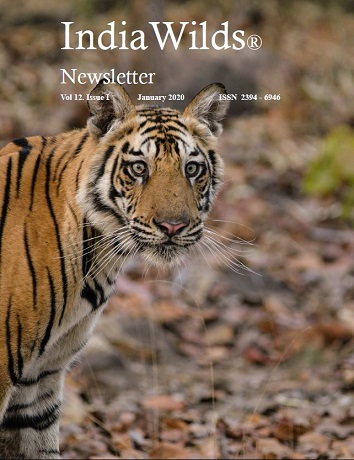
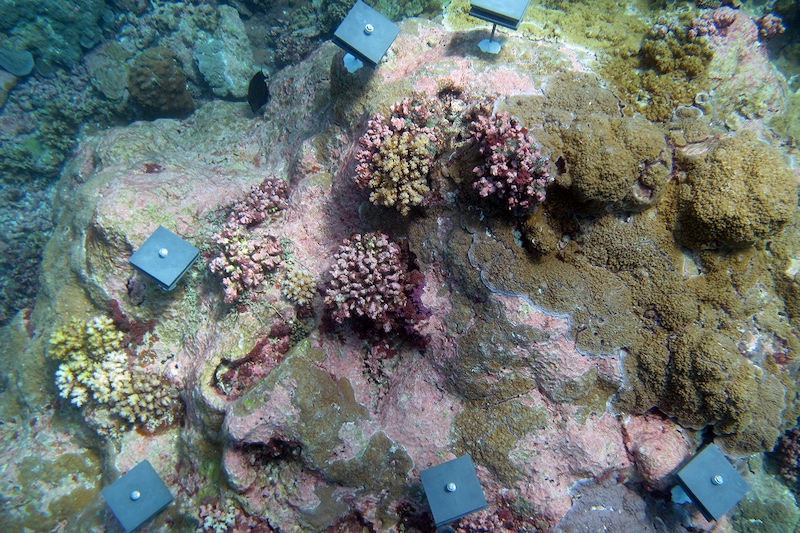
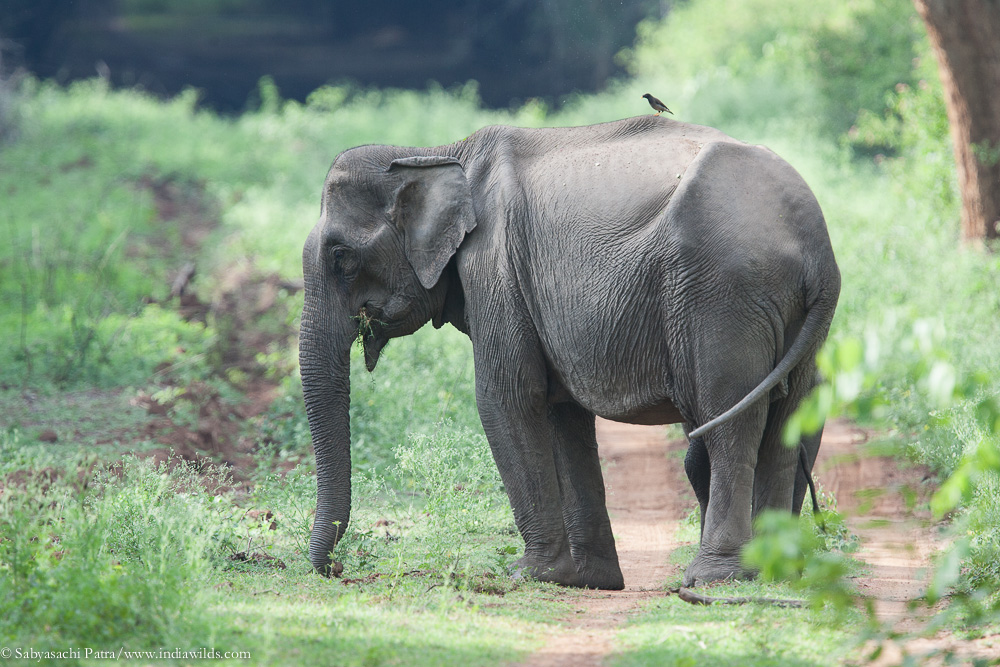



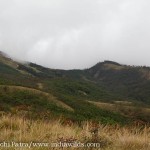

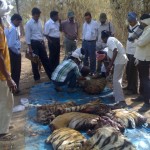







Leave a Reply